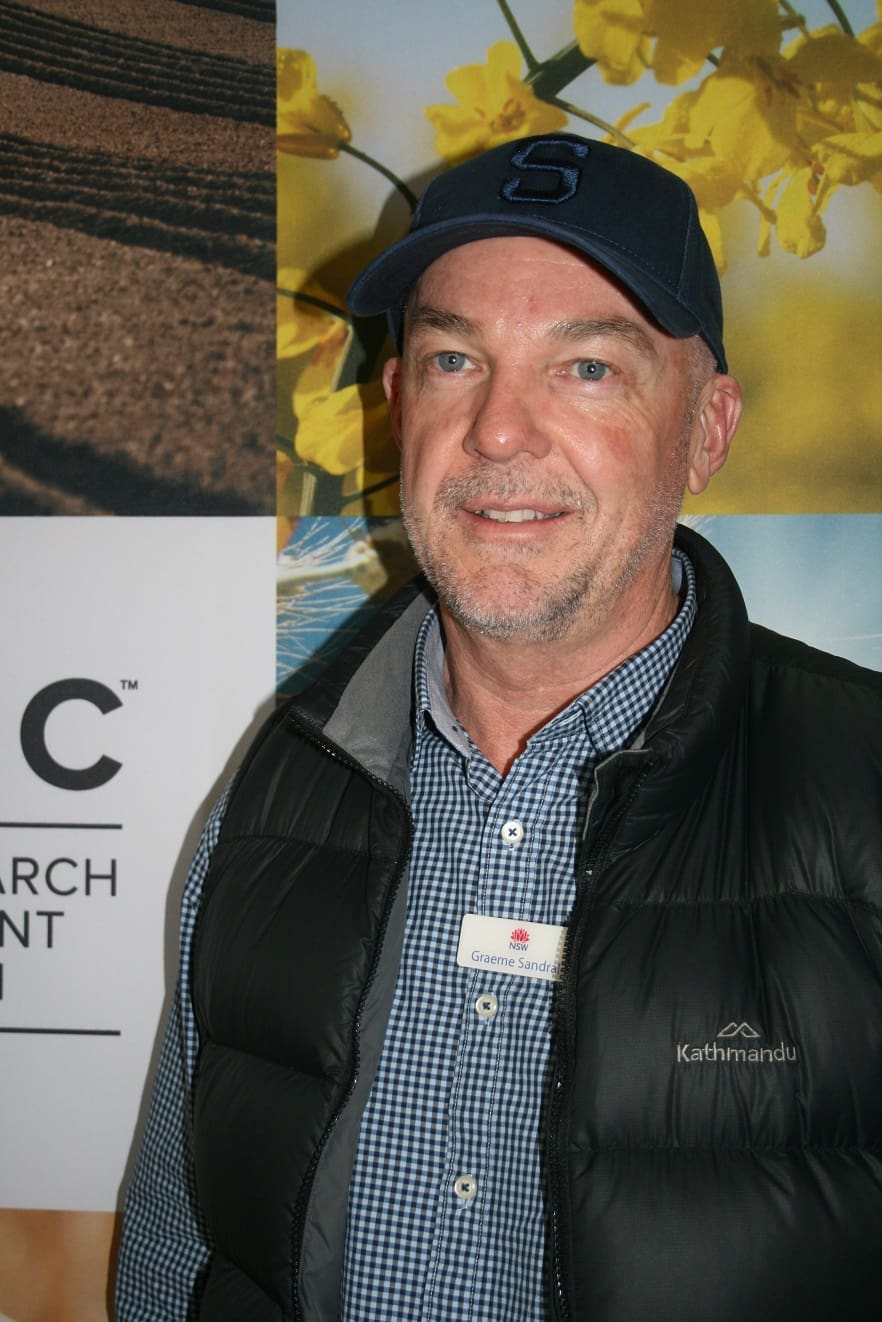DESPERATELY dry conditions across southern New South Wales during 2018 followed by a hot dry 2019 summer have sent growers back to the planning table on fertiliser budgets for the upcoming winter season.
Growers are being encouraged to undertake soil tests to determine reserves of key nutrients like nitrogen (N) and phosphorus (P) as residual N and P, combined with low removal rates in 2018, can provide potential fertiliser savings for the 2019 cropping program.
Speaking at a recent Grains Research and Development Corporation (GRDC) Grains Research Update in Wagga Wagga, NSW Department of Primary Industries (DPI) research scientist Graeme Sandral said in situations where nutrient export of the 2018 crop was very low, it was likely that residual N and P would be available for the coming 2019 season, allowing growers to reduce their fertiliser program.
“The N impact from a dry season can be two-fold – lower amounts of N being exported means more spared N (mineral nitrogen) could be carried from 2018 to 2019. In addition, the low 2018 stubble yields are likely to reduce N immobilisation during the 2019 growing season,” Mr Sandral said.
“Other considerations include higher mineralisation rates that can occur after drought. It’s important to remember that when the drought breaks, there’s usually higher mineralisation rates of N, provided the break results in adequate early rain.
“A late break will result in less pre-sowing mineralisation due to cooler soil temperatures and less time between the first opening rains and sowing.
“Soil testing is critical to better inform likely pre-season mineral N, which allows a baseline for growers to more accurately determine their fertiliser N requirements.
“If deep N cores can’t be completed pre-sowing then post-sowing cores between the sown rows is also very useful.”
According to Mr Sandral, wheat will require approximately 50 kilograms of soil N/tonne/hectare for 11 per cent protein and 60kg N/t/ha for 13pc protein. Pre-season and in-season N mineralisation is subtracted from this to provide an estimate of fertiliser N required. Canola will require approximately 80kg of soil N/t/ha.
Mr Sandral added a pre-cautionary note relating to N savings, urging growers to carefully weigh up any reduction in N inputs given that in most years, N is the most limiting factor in grain production.
P however is a different story. With many cropping soils high in P, Mr Sandral said savings were possible where input rates in 2018 exceeded removal rates.
“The reason P savings are possible is that most plant P is taken up from the soil’s reserve with a smaller proportion taken up from banded fertiliser,” he said.
“Banded P however does play an important role in early plant recovery of P and ensuring potential grain number for wheat is not compromised.
“Growers should factor longer term requirements into their strategy and base any decisions to amend P applications on soil test results and general industry benchmarks for 95pc of maximum crop yield. In NSW for example many soils have a Colwell P requirement for wheat of 30 to 38mg P/kg soil.
“A one-off reduction of P fertiliser rates is often reasonable following a drought year, but some P is still required.”
With many experiments examining P responses showing increases in grain yield due to starter P, Mr Sandral said it was important for growers to apply some P at sowing.
“Some P is still very important for early root development which assists the plant in exploring the greater soil P reserve,” he said.
“It’s also important for early head development when potential grain number is set – for example at or just prior to DC31.”
Nevertheless, Mr Sandral said P savings could be made after drought especially where December P export in grain is lower than P inputs at sowing, and where soil Colwell P values are equal to or greater than soil critical values.
As a conservative benchmark he said P savings could apply if Colwell P values were greater than 35 mg P/kg soil.
“In these circumstances one third of historical average annual P inputs can be used provided this value does not drop below 5kg P/ha in high and medium rainfall areas and 3kg P/ha in low rainfall areas,” Mr Sandral said.
“By way of example, if a wheat target yield for 2019 is estimated at 3t/ha and the P budget is estimated to be 3.6–5.5kg P/t of grain production, then the P budget would be 10.8–16.5kg P/ha or 49–75kg/ha mono-ammonium phosphate (MAP) fertiliser.
“If a medium value of 62kg/ha MAP (13.5kg P/ha) is assumed as a standard P budget this could be reduced by two thirds down to 18.6kg/ha of MAP or 4.1kg P/ha following the dry 2018.
“If our example is in a medium rainfall area then the threshold of 5kg P/ha applies (e.g. 5kg P or 23 kg MAP/ha is used).”
Source: GRDC


HAVE YOUR SAY